In today’s article, we have listed the top 100 famous female inventors whose achievements serve as inspiration for modern-day women. Women’s empowerment has been a hot topic for the past few years, and indeed, many ladies in history have proven themselves and shown the world how powerful they can be.
Top 100 famous female inventors in history
1. Ada Lovelace (1815-1852)
Ada Lovelace decided to add her own notes while she was translating the notes of Charles Babbage, a mathematics professor. These notes were about the analytical engine, Babbage’s theoretical invention. Lovelace has tripled the original text, earning her the credit for writing the first-ever computer algorithm worldwide in 1843.
2. Adeline D. T. Whitney (1824-1906)
Adeline D. T. Whitney was the author of several books meant for young and old alike. In 1882, Whitney patented the early version of the alphabet blocks. These blocks come in different sizes and shapes and can form letters, punctuation symbols, and numbers.
3. Aglaonice (02nd or 01st century BC)
Aglaonice is widely regarded as ancient Greece’s first female astronomer, with her studies focused on the cyclical patterns of the moon. Her predictions of the lunar eclipse were so precise that many people even believed that Aglaonice was a sorceress with the power of hiding the moon and making it appear again at her whim. Thanks to Aglaonice’s so-called magical reputation, she became renowned as the leader of the group of female astronomers known as the Witches of Thessaly. One of the craters of Venus with a diameter of 38.9 was named after her.
4. Agnès Poulbot (1967-present)
Agnès Poulbot was a French researcher who made improvements to car tires. Poulbot’s tire-tread design was responsible for their better strength and ability to last longer. The result is that the car uses less fuel while producing reduced amounts of carbon dioxide.
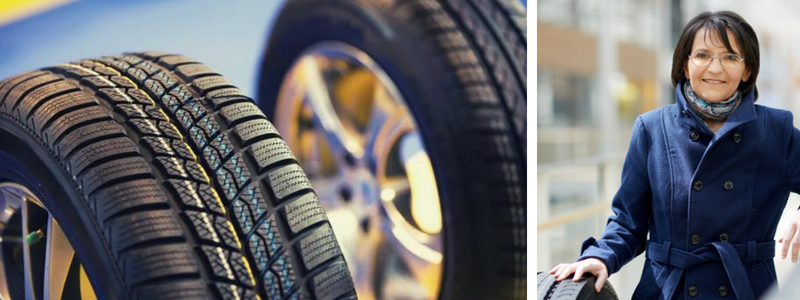
5. Alice Ball (1892-1916)
An African American chemist, Alice Ball, came up with the most effective leprosy treatment during the early part of the twentieth century when she was only 23 years old. Ball figured out how to make the chaulmoogra tree’s oil injectable and absorbable by the human body. Due to Ball’s untimely death at the young age of 24, Arthur Dean, another chemist, was the one who was credited for her invention. However, he was ultimately outed by Dr. Harry T. Hollmann, Ball’s mentor and advisor.
6. Alice Parker (1925-present)
While the revolutionary design for central heating of Alice Parker in 1919 was never used at all, it was touted to be the first design that made use of gas for heating a home instead of the usual wood.
7. Andrea Sreshta and Anna Stork (Unknown)
Andrea Sreshta and Anna Stork were graduate students at the School of Architecture at Columbia University when a destructive earthquake hit Haiti in 2010. These two students were assigned a project in one of their classes to look for a means to help with disaster relief. Following their talk with a relief worker, they realized a critical need that was often overlooked after a disaster hits, and this is none other than light. The two decided to develop a solar-powered, waterproof, inflatable light called the LuminAID Solar Light. This design provides light for 16 after a six-hour charge can be packed flat, and comes with a handle for portability.
RELATED: 100 Famous inventors and their best invention ideas
8. Ann Lambrechts (Unknown)
Ann Lambrechts was the woman behind creating the steel wire element that strengthened reinforced concrete. This element helped develop structures that cannot be built or constructed using old or traditional methods.
9. Ann Kiessling (1942 until present)
Ann Kiessling is a female American stem cell researcher, scientist, and reproductive biologist. Kiessling discovered the reverse transcriptase activity in normal human cells. She was also a member of the laboratory of Beaudreau and was one of the first scientists who proved that a reverse enzyme existed in the family of viruses. A reverse enzyme is an enzyme wherein the genetic information flows to DNA from RNA.
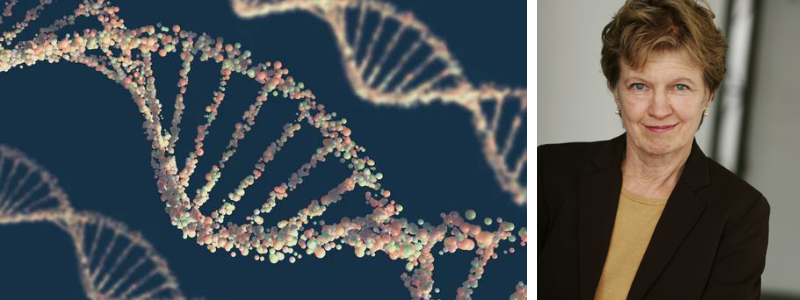
10. Anna Connelly (18000s)
Tenement fires were relatively more severe and fatal before Anna Connelly developed an external metal staircase in 1887, which was considered the first-ever fire escape in the world. Aside from helping save human lives, Connelly’s invention also inspired one of the first building codes in New York City. These building codes mandated all residential buildings to have another path to escape in case of emergencies.
11. Ann Tsukamoto (1952-present)
Ann Tsukamoto and her colleagues made a significant breakthrough in the medical field in 1991. The group was able to identify stem cells and isolate them. This discovery has been critical to numerous medical advancements, such as developing bone marrow transplants as a form of treatment for blood cancer.
12. Ayla Hutchinson (1996-present)
Ayla Hutchinson, a New Zealand teen, saw how her mother cut her finger while using a hatchet to split kindling. It made her realize that there should be a better and easier way to complete such a critical task. Hutchinson decided to create a device that made it safer and easier to cut kindling for her science fair project. It resulted in the creation of the Kindling Cracker, a type of cast-iron device that uses a built-in ax blade inside a safety cage. This cage will hold the wood while the hammer hits it, easily splitting the log into pieces. Her prototype received a very positive response, so she decided to develop the idea further, and with the help of her father, she founded a company for its manufacturing.
13. Barbara Askins (1939-present)
While Barbara Askins was a NASA worker, she was given the task of looking for a way to enhance the quality of the photographs taken from space. Askins’ system of improving photo negatives in 1978 was more widely applicable since it could also be used to clarify photos even after they were developed. Her technology was then adapted to be used with historical photo restoration and X-rays.
14. Barbara Liskov (1939 until present)
Barbara Liskov was among the first women to earn a Ph.D. in computer science, but she was an IT trailblazer early on. This computing virtuoso has a few significant achievements under her belt, such as the invention of CLU, a programming language that helped lay the foundation for the object-oriented form of programming. Liskov was also the developer behind the object-oriented database system Thor, and Argus, the programming language, mainly CLU’s extension supporting distributed programs. These crucial advances in the field of object-oriented programming contributed to numerous modern OOP-based operating systems and languages, including Java, Mac OS X, Visual Basic Net, and Objective-C.
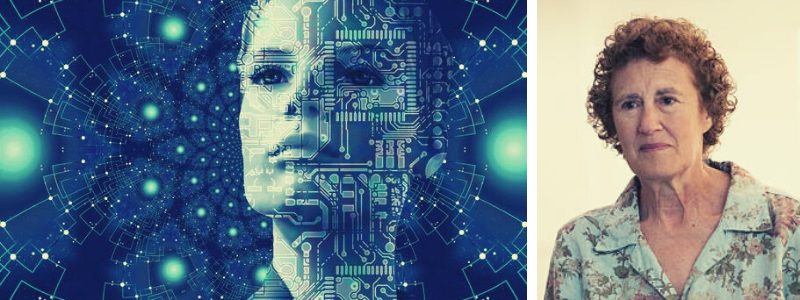
15. Barbara McClintock (1902-1992)
The female American cytogeneticist and scientist Barbara McClintock was the woman behind the discovery of genetic transposition. McClintock was ahead of her time, and, during the 1940s and 1950s, she learned the role of controlling the elements in genetic transposition and regulation. Sadly, she halted publishing her work’s results and stopped giving lectures because of her deep disappointment with her colleagues since her work was regarded as too radical and downright ignored. However, McClintock continued carrying out her research.
16. Bette Nesmith Graham (1924-1980)
Bette Nesmith Graham’s 1951 invention made her a millionaire from being a simple secretary. Originally marketed under the name “Mistake Out,” her homemade typewriter correction fluid became an instant hit among other secretaries like her. After additional experimentation, Graham perfected her recipe, which led to the birth of Liquid Paper.
17. Beulah Louise Henry (1887-1973)
The complete list of the inventions of Beulah Louise Henry would be a long one because she was known for 49 patents and 110 inventions, and this female American inventor benefitted from all of them. She submitted her first-ever patent for the vacuum ice cream freezer in 1912 while she was only a college student. When she moved in 1924 to New York City, she founded two companies to sell her numerous inventions. During the 1930s and 1940s, Henry shifted her focus to improving existing machines such as typewriters. Among her patents was one for a protograph, a typewriter that created up to four original and identical copies with no need to use carbon paper.
18. Caresse Crosby (1892-1970)
Born Mary Phelps Jacob, Caresse Crosby was a female American activist, writer, and publisher who invented probably one of the most essential garments in any woman’s life, none other than the bra. When she was only nineteen, in 1910, Jacob was preparing one evening to attend a debutante ball. She chose a sheer evening gown featuring a plunging neckline that exposed her cleavage. Her corset cover showed from under her gown. Jacob asked her personal maid to bring some pink ribbons, two pocket handkerchiefs, some pins, and thread and needle. She used all of these to fashion a simple bra.
19. Caroline Herschel (1750 to 1848)
Caroline Herschel is a female German inventor, scientist, astronomer, and discoverer of some comets, such as the periodic comet 35P/Herschel–Rigollet. She often used the small Newtonian sweeper given to her as a gift by her brother William so she could study the sky by herself. She discovered the open cluster currently known as NGC 2360 on the 26th of February, 1783. She later discovered and cataloged fourteen new nebulae, forms of a low-density cloud of dust and gas from which a star is born. These include the NGC 205, Andromeda Galaxy’s companion. It was her first-ever accomplishment and was also her first experience in the field of mathematics.
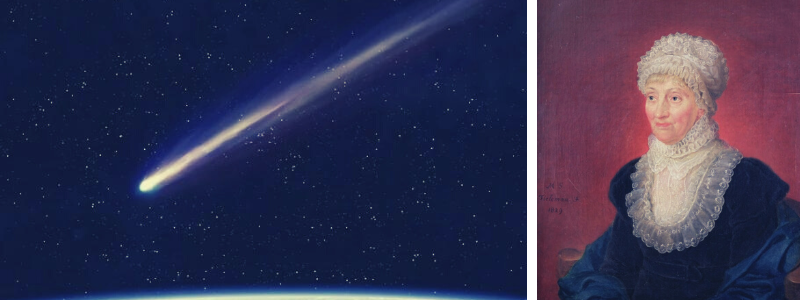
20. Catherine Griswold (18000s)
Measured mainly on the number of patents under her name, Catherine Griswold is the 1800s’ most prolific American female inventor. She had thirty-one patents that were all apparel-related, which included twelve patents that covered her own unique designs and nineteen patents related to the design of and mechanical improvements to corsets. The dress reform movement started around 1876, focusing on improved comfort and less constraint on women’s fashion to reduce the harm and risk to women’s bodies. Griswold heralded the trend when she patented the skirt-supporting corset, which used elastic shoulder straps to carry the corset’s weight.
21. Catia Bastioli (1957-present)
Catia Bastioli was the woman behind creating the bio-plastics that can turn into soil in three to eight weeks. This development can serve as a replacement for plastics and can help in reducing pollution on the planet.
22. Cecilia Payne-Gaposchkin (1900-1979)
In Cecilia Payne-Gaposchkin’s doctoral thesis, the astrophysicist and astronomer suggested that stars were made up of helium and hydrogen. This notion was quite radical during that time and received a lot of rejections from people who believed that the Earth and the Sun were made up of similar elements. Gaposchkin was also the first to connect the stars’ spectral classes to their respective temperatures.
23. Dorothy Hodgkin (1910-1994)
Dorothy Hodgkin is a female British chemist and scientist who worked in the Department of Mineralogy and Crystallography. Hodgkin was responsible for advancing the X-ray crystallography method, a technique used to identify the three-dimensional structures of crystals.
24. Ella Gaillard (18000s)
In 1912, Ella Gaillard was described as the woman who set herself apart by developing numerous inventions, such as the eyeless needle still used mainly by surgeons. The innovation got rid of the need for doubling the surgical thread, which is a common characteristic when an eyed needle is used. Using a single thread strand allows for lessened scarring, and these eyeless needles are used to this day in modern surgery.
Gaillard was also behind the invention of a combination musical watch, calendar, and paperweight, although it was not clear if this was commercialized. She also created a music box in 1885 that featured a portable fountain that spouted water while the music box was playing.
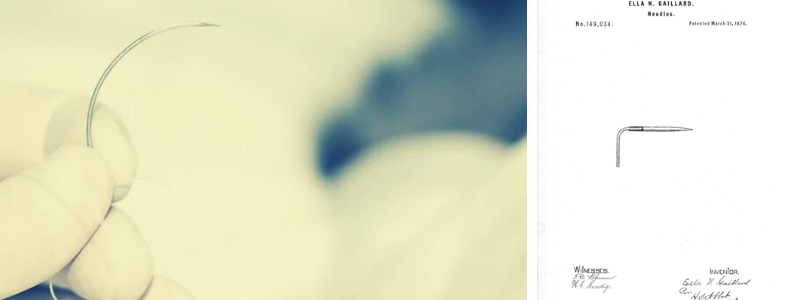
25. Edith Clarke (1883-1959)
Edith Clarke is a female American electrical engineer. When she was employed at General Electric, she invented the Clarke calculator. Clarke’s invention was a simple graphical device that could solve equations involving voltage, electric current, and impedance in the power transmission lines. This innovative device could solve the line equations that involve hyperbolic functions up to ten times faster than earlier methods.
RELATED: Top 100 famous inventions and greatest ideas of all time
26. El Dorado Jones (1860-1932)
El Dorado Jones earned the nickname Iron Woman. She had a metalworking factory of her own where only women older than forty years old were employed. Although she never got any funding for its manufacturing, Jones developed the airplane engine muffler in 1917.
27. Elizabeth Lee Hazen (1885-1975) and Rachel Fuller Brown (1898-1980)
Elizabeth Lee Hazen and Rachel Fuller Brown were two lab researchers at the New York Department of Health who discovered Nystatin in 1950. It is among the first effective forms of anti-fungal medicine. The two collaborated on experiments by mail.
28. Elizabeth “Lizzie” Magie (1866 – 1948)
Magie originally patented “The Landlord’s Game” in 1904, and it was a critique of all the injustices of unrestrained capitalism. It is also regarded as the first-ever version of the popular game Monopoly. Unfortunately, Charles Darrow stole Magie’s game and sold it in 1935 to the Parker Brothers. While the company tracked down Magie, she was only offered $500 for the invention. Hasbro, the company that currently owns the game, was criticized in 2019 when they released Ms. Monopoly, which was supposed to be the game’s feminist version, after they still don’t recognize the woman who invented the original.
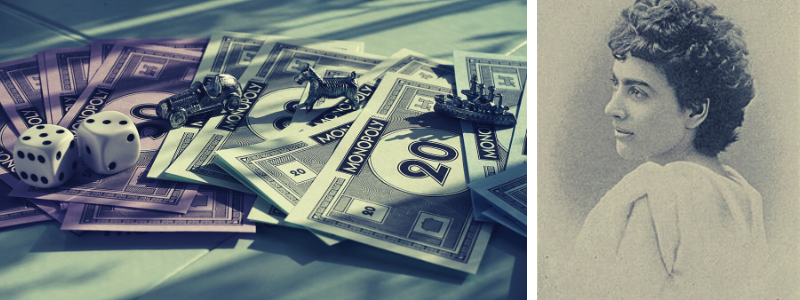
29. Eliza Murfey (18000s)
Eliza Murfey filed for thirty patents, but historians have only identified twenty-three of them. Although Murfey was a practicing physician, her focus was to improve the safety of railroad travel. She was the author of several patents to enhance the lubrication of axles, pistons, and railcar bearings. If the moving parts were not greased properly, there would be a seize-up of the mechanisms, usually with tragic consequences. Murfey’s processes were very effective, and these continued to be used even after introducing more reliable roller bearings. It also seems that after her husband’s death in 1869, Murfey became a prolific mechanical designer.
30. Ellen Fitz (18000s)
Ellen Fitz worked as a tutor in Canada when she developed the globe mount in 1875, which can display the daily rotation in relation to the sun’s path not just by night and day but also throughout the entire year.
31. Emmy Noether (1882-1935)
The great Albert Einstein himself has described Emmy Noether as the most important female in the entire history of mathematics. Noether came up with the mathematical principle that explains the relationship between the laws of conservation and symmetry. Noether’s Theorem, which was developed in 1920, served as the foundation of quantum physics, which helped Einstein formulate his general theory of relativity.
32. Erna Schneider Hoover (1926-present)
Before Erna Schneider Hoover invented the telephone call traffic, the phone circuit equipment at the Bell Labs, where Hoover was working as a researcher, was overloaded all the time. Hoover’s computerized solution in 1967 could monitor the volume of calls and adjust the rates of acceptance accordingly to prevent overloading circuits.
33. Esther Sans Takeuchi (1953-present)
Some people require pacemakers to ensure that their heart continues to beat. The only problem is that these pacemakers tend to run out of their charge fast. It leaves the user no choice but to undergo another major operation to replace the pacemaker’s battery. Thankfully modern pacemakers received an update based on the design of Esther Sans Takeuchi.
34. Evelyn Berezin (1925 – 2018)
Evelyn Berezin not only developed the first-ever computerized system for airline booking but was also the one responsible for creating the first word processor in the world in 1971. When she realized that her gender would make it impossible to move up the ladder in the industry, Berezin decided to establish Redactron, her very own company, to launch her unique inventions into the market.
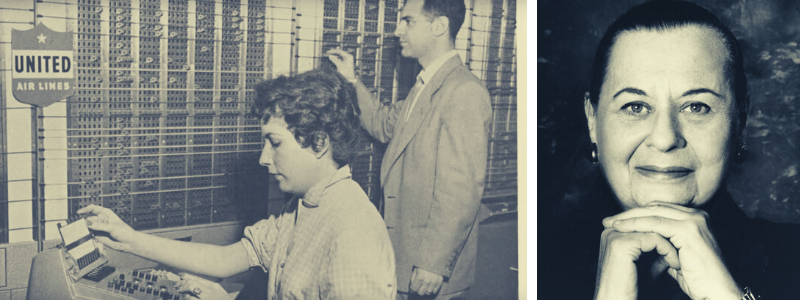
35. Florence Parpart (18000s)
The street sweeper design of Florence Parpart in 1900 was not necessarily the first. However, it was such a significant improvement on past models that two years after she received the patent for it, Parpart had contracts from different parts of the United States to produce her design. Aside from the street sweeper, Parpart also patented the electric refrigerator when most people were still using iceboxes. She also successfully marketed this electric refrigerator and improved it over the years.
36. Flossie Wong-Staal (1946-2020)
Flossie Wong-Staal was the first person to clone HIV and proved that HIV is the leading cause of AIDS. Wong-Staal also finished the virus’ genetic mapping, which led to the possibility of developing the blood tests for HIV. Being iTherX Pharmaceuticals’ Chief Scientific Officer, Wong-Staal continues with her development and discovery of new drugs that can help in fighting off AIDS as well as other diseases.
37. Gertrude Belle Elion (1918-1999)
During Gertrude Belle Elion’s long career as a pharmacologist, she helped develop numerous drugs to help treat cancer, malaria, herpes, and AIDS. In collaboration with George Herbert Hitchings, Elion developed Azathioprine, the first-ever immunosuppressive drug initially used for chemotherapy patients and was eventually used for organ transplants.
38. Giuliana Tesoro (1921-2002)
Giuliana Tesoro was a female Italian chemist and scientist who invented flame-retardant fiber. Tesoro made crucial advances in the field of textile processing as well as organic compounds that helped improve the performance of textiles for ordinary consumers and the efficiency of the manufacturing systems. The flame-resistant fibers are among Tesoro’s most crucial developments. She came up with ways to avoid static accumulation in synthetic fibers, and she also made enhanced permanent-press properties for textiles.
39. Grace Hopper (1906 – 1992)
The US-born Grace Hopper, in partnership with Howard Aiken, developed the room-sized 5-tonne machine in 1944 called Harvard’s Mark I computer. Hopper was the inventor of the compiler that could translate written language into computer code. She also coined the words “debugging” and “bug” when she had to remove the moths from her device. Imagine what the world would be like today if Hopper hadn’t invented programming.
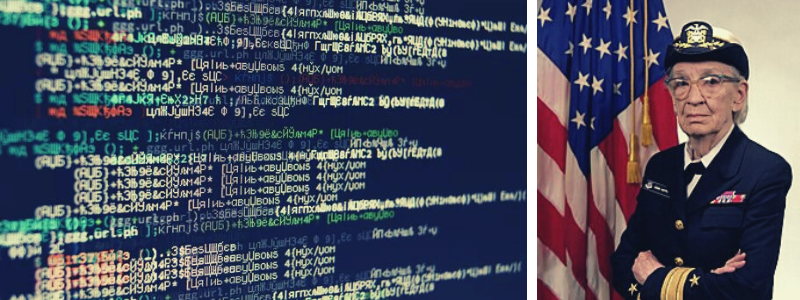
40. Harriet Tracy (1834-1918)
All of Harriet Tracy’s patents describe mechanical devices, and eleven of these were related to improving the sewing machine. Tracy also developed the collapsible fireplace grate, a method of attaching cribs to bed stands, and the upgraded fire escape described as a gravity elevator during that time. The fire escape featured automatic platforms that ensured that the shaft remained closed to ensure that no person would fall through it.
Tracy’s elevator patent was then commercialized and was mentioned in a newspaper article in 1881. They also noted that it was installed in a large new building where everyone interested saw how they operate. She was granted ten patents between 1890 and 1893 during a specifically formative stage of her career.
41. Harriet Williams Russell Strong (1844-1926)
Harriet Williams Russell Strong is a female American conservationist and social activist who was also the inventor of a way of constructing reservoirs and dams patented on the 6th of December 1887. She was also responsible for developing a method for storing water and impounding debris patented on the 6th of November 1894.
Strong’s patented inventions include:
- A device to raise and lower windows was patented on the 7th of October 1884.
- A window sash holder patented on the 16th of November 1886.
- The Hook and Eye was patented on the 4th of November 1884.
The World’s Columbian Exposition in Chicago also awarded Strong with two medals in 1918 for her notable inventions.
42. Hedy Lamarr (1914-2000)
Many of you are probably familiar with Hedy Lamarr, one of the most glamorous and famous stars during the era of black and white films. But did you know that she was also among the brilliant minds who were responsible for the breakthrough invention that served as the foundation for Bluetooth, GPS, and even Wi-Fi technology? An Austrian–American actress, Lamarr was also a gifted engineer and mathematician. Once the Second World War broke out, she hoped to contribute to the war efforts by improving torpedo technology.
Lamarr worked with composer and musician George Antheil to develop the concept of frequency hopping, the ability to encrypt torpedo control signals that could stop enemies from blocking them and then sending torpedoes off course. While this idea of Antheil and Lamar received a patent in 1942, their technology was ignored by the US Navy for two decades. However, it was eventually used during Cuba’s blockade in 1962. However, since then, Lamarr’s spread-spectrum technology has served as the foundation for the portable devices people use daily today. This inducted her in 2014 to the National Inventors’ Hall of Fame.

43. Helen Blanchard (1840-1922)
Helen Blanchard was not only a productive inventor but also a successful entrepreneur who founded the Blanchard Overseam Machine Company around 1876 to manufacture her proprietary sewing machines as well as other related devices. While considered low-tech and quaint in the twenty-first century, home and industrial sewing machines were both the focus of innovation during the 1800s. Numerous women patented their own sewing machines, with some improvements on existing machines and others introducing a selection of different peripheral devices.
Out of Blanchard’s twenty-eight recognized patents, twenty-two of them were related to industrial sewing machines, such as the invention of the device that could automate the zigzag stitch. Blanchard also invented a pencil sharpener, a surgical needle, a corset cord fastener, and upgraded elastic goring for shoes. She was also described in 1891 as an entrepreneur who owned a factory, grand estates, and several patent rights that yielded her a substantial income in terms of royalties.
RELATED: 101 Inventions that changed the world in the last 100 years
44. Hertha Ayrton (1854-1923)
Hertha Ayrton was a female British physicist, mathematician, engineer, and inventor of the line divider. In 1915, she came up with a device that could blow poisonous gases away from the trenches to keep the soldiers healthy and fit. Over 100,000 of these fans were utilized on the Western Front. She also had other inventions such as arc lamps and electrodes, air propulsion, and mathematical dividers.
45. Ida Forbes (18000-19000s)
Information about Ida Forbes is a bit limited aside from the fact that she received the patent for the first-ever electric hot water in 1917 during an era when gas was used for running most hot water heaters.
46. Ida Hyde (1857-1945)
Ida Hyde was the very first female researcher at Harvard Medical School. Hyde developed one of the initial models of the intracellular micropipette electrode. This made it possible for her to monitor and stimulate a cell with no need to cause any disturbance on the other cell wall. Today, this technology developed by Hyde continues to be used in modern-day science laboratories.
47. Irène Joliot-Curie (1897-1956)
Irène Joliot-Curie was a female French chemist and scientist who discovered artificial radioactivity. Together with her group, she spearheaded the research about radium nuclei. It helped another group of physicists from Germany, with Fritz Strassman, Lise Meitner, and Otto Hahn at the helm, to discover the so-called nuclear fission, or the nucleus’ splitting of itself, which emits massive amounts of energy. The now-popular calculations of Lise Meitner actually disproved Curie’s results to show the possibility of nuclear fission. Frédéric and Irène Joliot-Curie discovered artificial radioactivity together. To date, the Curie family has the highest number of Nobel laureates.
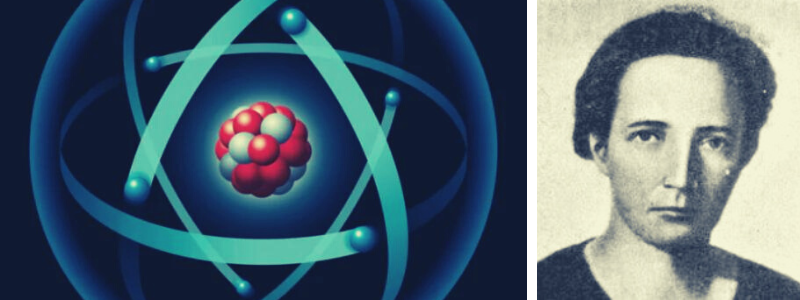
48. Jane Goodall (1934-present)
Jane Goodall is a female British anthropologist, primatologist, and scientist. She is the foremost expert in the world when it comes to chimpanzees. She was also the one who discovered the fact that chimpanzees make and use tools and eat meat. On the 30th of October 1961, Goodall observed for the first time that chimpanzees feed on meat. After patient observation, she, later on, saw that chimpanzees also hunt for meat. Such revealing observations refuted the widely held assumptions about chimpanzees being vegetarian.
On the 4th of November 1961, Goodall observed the chimps Goliath and David Greybeard developing tools for termite extraction from their mounds. The chimps would first choose a thin branch from a tree and strip off the leaves before pushing the branch into the mounds of termites. The chimps would then pull out the stick, now covered with termites, and use their lips to pick off the termites. This event was among the most significant of Goodall’s discoveries.
49. Jane ní Dhulchaointigh (19000s-present)
Jane ní Dhulchaointigh is a product designer from Ireland who was behind the creation of Sugru. Sugru is a type of moldable glue that can make it much easier for people to fix things.
50. Jeanne L. Crews (1940-present)
During an era when NASA was almost devoid of female scientists, Jeanne L. Crews, an American engineer, made a substantial contribution. She designed a space bumper to protect a manned craft and satellites from meteorites and space debris. After Crews became a member of NASA in 1964, she noted how space vehicles could not endure impact from even tiny objects. Crews was not the only one concerned about it. Burt Cour-Palais, another employee at NASA, was also worried about this issue. As soon as Crews met Palais, she declared that they would fix the problem.
The two didn’t agree on the best solution, and each of them followed a different approach. Crews decided to work with a ceramic fabric called Nextel. She developed a multi-fabric, multi-layered shield that is lighter than a single aluminum sheet and can stop most space debris by diffusing the object’s energy once it penetrates the layers of the bumper. Thanks to the creativity and determination of Crews, both present and future astronauts are a tad safer when traveling the solar system.
51. Jeanne Villepreux-Power (1794 – 1871)
While not many of you may have heard of the name Jeanne Villepreux-Power, this French naturalist was popular during her time for an invention that simplified the process of studying marine life, and this is none other than the aquarium. On the island of Sicily, she began her scientific studies, and it was in 1832 that she started to investigate the paper nautilus. According to popular opinion, the nautilus acquired its shell from a different organism. However, to confirm if it was true, Power required something to observe the nautilus more closely.
It inspired her to create the first-ever glass aquarium to let her monitor the nautilus under controlled conditions, which proved that it produced its own shell. Power designed two more variants: an aquarium resembling a cage that can be raised and lowered to varying depths and a glass apparatus inside a cage to study shallow-water creatures. Thanks to Power’s groundbreaking work, she became the first-ever female member of Catania Accademia and several other scientific academies.
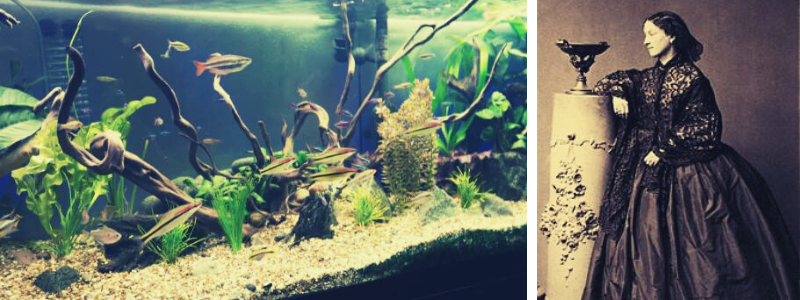
52. Joan Clarke (1917-1996)
Alan Turing is probably the first name that comes to mind when Bletchley Park is mentioned. It is the old mansion in England where the cryptographers were working hard to decode documents from their enemies during World War II. But what many people don’t know is that Joan Clarke was among the best minds behind the codebreaking scheme. Clarke graduated from the University of Cambridge with a degree in mathematics. Listening to her professor’s advice, who noticed her talents, Clarke started to work at Bletchley as a clerical assistant.
Her abilities helped her rise to become a cryptographer who unscrambled messages coming from the German navy. Clarke’s work paved the way for almost instantaneous responses within the military that saved lives from possible U-boat attacks. The contributions of Clarke earned her the award in 1946 of a Member of the Order of the British Empire.
RELATED: A brief history of patents: patent law past and present
53. Jocelyn Bell Burnell (1943-present)
Jocelyn Bell Burnell was responsible for discovering radio pulsars in 1967 as a post-graduate. Radio pulsars are highly magnetized neutron stars that produce an electromagnetic radiation beam that effectively pulse the light they give off at the Earth while spinning. The Nobel Prize in Physics recognized the discovery in 1974, but Burnell was not named the recipient due to her status as a student.
54. Josephine Cochrane (1839-1913)
Josephine Cochrane frequently entertained guests at her home, which made her wish for a machine that could do the job of washing her dirty dishes much faster than the servants, with less chance of breaking them. Cochrane’s machine was the first-ever automatic dishwasher that used water pressure and featured a motor that turned a wheel within a copper boiler. Cochrane’s alcoholic husband left behind massive amounts of debt following his death. It served as her motivation to patent her dishwasher in 1886; she then decided to open her very own factory for its production.
55. Katharine Blodgett (1898-1979)
Before Blodgett invented her breakthrough non-reflective glass coating in 1935, glass during that time was not nearly as reliable and valuable as you know it today. Blodgett’s invention has proven indispensable in producing eyeglasses, camera lenses, and microscopes.
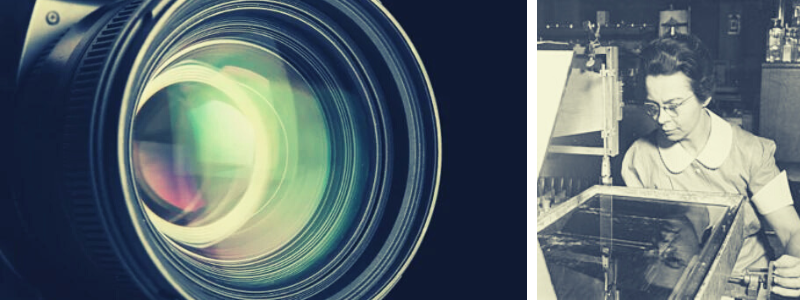
56. Joy Mangano (1956-present)
The female American entrepreneur Joy Mangano has developed and sold almost $3 billion worth of products. Her first invention was the Miracle Mop, which was followed by many others. One of these was the Huggable Hangers, the velvet-flocked no-slip hangers with a slender profile that help conserve wardrobe space. She also developed Forever Fragrant, a product line of odor neutralizers including drawer liners, shoe shapers, finials, wickless candles, scent stands, and sticks.
Mangano also designed Performance Platforms, which are shoes featuring rubber platform heels that provide extra height to the user. This line initially began with sneakers that extended to Mary Janes, sandals, and mules. Mangano also created Spinball Wheel luggage, Shades Readers, and Comfort and Joy Textiles.
57. Letitia Geer (18000s)
For many years before Letitia Geer developed the one-handed syringe in 1899, medical professionals used syringes that required both hands to administer injections.
58. Lillian Gilbreth (1878-1972)
Lillian Gilbreth was a psychologist and engineer who performed extensive research on workspaces and their psychological impact on productivity. Gilbreth’s genius in the field of ergonomics has blessed the world with a lot of valuable inventions, and the most notable of them all is the foot pedal trash can.
59. Lynn Conway (1938-present)
Lynn Conway is a female American electrical engineer, computer scientist, and co-inventor of numerous breakthroughs. In 1966, during her employment at IBM, she developed the dynamic instruction scheduling used for delivering out-of-order issuance for various instructions for every machine cycle in the superscalar computers. Classified at first, the research paper was declassified by IBM officially on the 7th of September 2000. It granted Conway a worldwide license for its distribution for academic and historical purposes.
RELATED: How to succeed as an inventor: what does an inventor do?
60. Margaret Hamilton (1936-present)
Margaret Hamilton is a modern-day icon in more ways than one. She was among the first people who used the term “software engineering” and urged its development as a legitimate discipline in engineering. During her career, Hamilton also published more than one hundred papers and worked on more than sixty projects and six major programs.
Together with Grace Hopper, her work helped open the door for more females to hone successful careers in the field of STEM. Hamilton is the subject of one of the most famous images associated with moon landings, in which she was standing beside the code that she wrote for the Apollo project with her team at MIT. Aside from this, Hamilton also established two successful businesses, and in 2016 she was awarded the highest civilian honor in the US: the presidential medal of freedom.
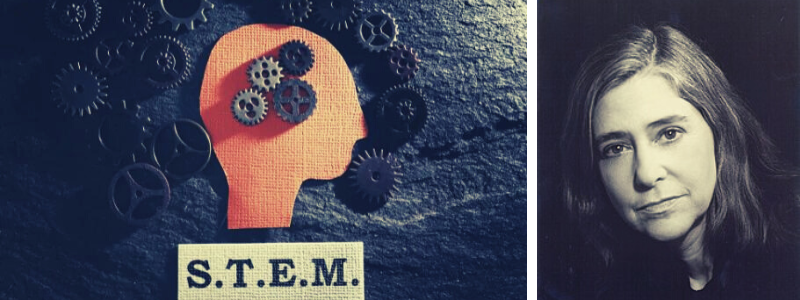
61. Margaret E. Knight (1838-1914)
Margaret E. Knight is the woman you should be thanking for the paper bag you often use today. Thanks to her invention, she was the most popular female inventor of the nineteenth century. She was thirty years old when she developed a machine that could fold and glue paper to form a paper bag with a flat bottom. This product was so popular that the concept was stolen by a man to patent it himself. During the court trial of the patent interference case filed by Knight against the man, he argued that a woman couldn’t understand mechanical complexities.
Knight won the case when she provided proof that she was the one who developed the machine, which gave her the right to patent it. Throughout Knight’s career, she invented more than one hundred different machines, 20 of which were patented, such as a window frame with sash, the shoe-cutting machine, and a rotary engine. However, if staying power is an actual test of any invention, the paper bag that continues to be used to this day is solid proof of Knight’s incredible gifts.
62. Margaret A. Wilcox (1838-2015)
Margaret A. Wilcox made the most out of the heat already produced as combustion’s byproduct. She developed a way of heating cars in 1893 by having the air channeled over the engine and into the cab.
63. Maria Goeppert-Mayer (1906-1972)
This female German-born American physicist and scientist was the developer of the atomic nucleus’ nuclear shell model. During the latter part of the 1940s, Mayer invented her mathematical model of the nuclear shells’ structure, which she published in 1950. Her model explained why specific numbers of nucleons within an atomic nucleus lead to notably stable configurations. Eugene Wigner called these numbers the magic numbers, consisting of 126, 82, 50, 28, 20, 8, and 2. Mayer realized that the nucleus is indeed a series of closed shells with pairs of protons and neutrons coupling together.
64. Maria Beasly (1836-1913)
The female American inventor Maria Beasley wanted to ensure that people would no longer die out at sea. For millennia, people had been navigating and exploring the seas, but during all that time, existing lifeboats were not that effective if an SOS situation took place. Beasly saved thousands of lives after she invented the life raft in 1882. Some of these people include 706 passengers of the sunken Titanic.
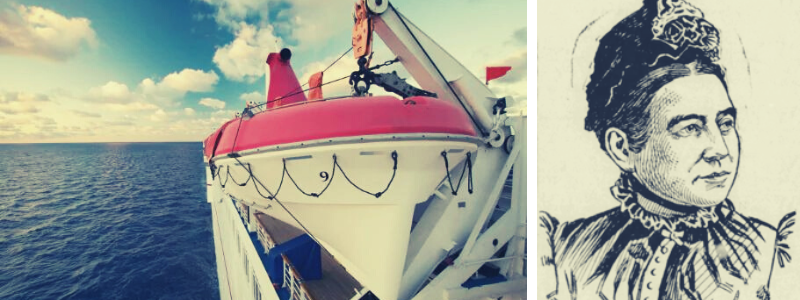
65. Maria Telkes (1900-1995)
Maria Telkes was a Hungarian scientist renowned for developing the first-ever thermoelectric power generator in 1947. With the help of this technology combined with the semiconductor thermoelectricity principles, Telkes created the first 100 percent solar heating system for Dover Sun House, located in Dover, Massachusetts. By 1953, she had also developed the pioneering thermoelectric refrigerator.
66. Marie Curie (1867-1934)
When Marie Curie, a Polish physicist, was only forty-four years of age when she presented the theory of radioactivity, a term she coined herself. She also discussed methods of isolating radioactive isotopes and discovering two new elements, radium and polonium. Marie Curie was also the first person ever in history to win two Nobel Prizes. She is also the only person worldwide who won twice in multiple sciences.
67. Marie Van Brittan Brown (1922-1999)
Marie Van Britten Brown was a nurse who was alone at home most of the time. She thought of an idea that could make her feel much safer. With Albert, her husband, she developed the first-ever home security system to keep up with the slow responses of the police to the rising crime rates during the 1960s. Van Britten Brown’s device was a bit complex, with a motor powering the camera as it moved down and up the door to look through the peephole. Her bedroom also had a monitor complete with an alarm button.
RELATED: 18 Random invention ideas that made millions
68. Marion Donovan (1917-1988)
If you find it messy to deal with a baby’s diapers today, can you just imagine what things were like before the waterproof covers were invented? When Marion Donovan, an American entrepreneur, had kids, she soon realized that the regular cloth diapers that didn’t have covers were highly susceptible to leaks. Donovan spent long hours taking off clothing and bed sheets and washing them. Using a shower curtain, Donovan sewed a cover that would go over the cloth diapers, which helped prevent leaks without causing diaper rash or chafing.
In 1949, Donovan earned four patents for the boater diaper cover she made, which included one that featured plastic snaps instead of diaper pins. However, her first attempts at selling her creations to manufacturers didn’t succeed. She decided to hire a company to produce them on her behalf and started to sell them through Saks Fifth Avenue. After two years, she sold her patents and company for $1 million to Keko Corporation. Donovan invented and patented twenty more items based on the notion of simplifying everyday tasks.
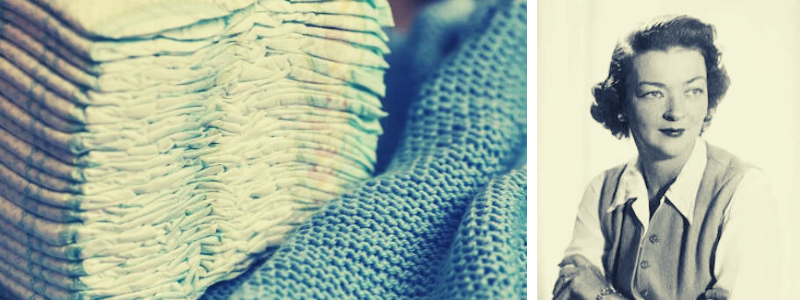
69. Marissa Mayer (1975-present)
Marissa Mayer, a female American software engineer, scientist, and businesswoman, had a significant influence on the establishment of Google Inc, the leading search engine company, during its early years. Later on, Mayer served as the president and CEO of Yahoo! Inc. from 2012 to 2017. Mayer rejected a high-paying consulting job in 1999 to take a position with Google as the first female software engineer of the company and was its twentieth employee at that time. Soon after this, Mayer became an influential figure at the company, steering most of the highly successful efforts in her different roles as an executive, designer, and product manager.
Mayer is the woman behind the design of the search interface of Google’s home page. As the product manager for the company’s search engine Google Search for over ten years, she earned credit for increasing the number of everyday searches from just a few hundred thousand to over a billion.
Other products and services that Mayer contributed towards were:
- Free email service Gmail
- The Google Chrome web browser.
- Google Directions and Google Maps – a searchable database of street-level photos and street views.
- Google Earth – offers comprehensive satellite images of many locations worldwide.
Mayer was also the co-founder of Lumi Labs in 2018, which was involved in developing AI-enabled consumer applications. The company changed its name in 2020 to Sunshine, and during the same year, it released Sunshine Contacts. It was their first product which is an app for contact information management.
70. Marjorie Joyner (1896-1994)
Marjorie Joyner was a female American businessperson who invented the permanent wave machine. She was searching for an easy solution to curling women’s hair when she was inspired in 1939 by a pot roast that was cooking, using paper pins to speed up preparation time. Joyner experimented with the same paper rods before designing a table that one can use for straightening and curling hair by wrapping the strands on rods on top of the person’s head.
The new method made it possible for hairstyles to last a few days. To improve the comfort of the process, Joyner enhanced it by developing a scalp protector that the woman would wear when her hair was being curled. Joyner’s permanent wave machine was in demand in salons all over the country among white and African American women alike. In 1967, she also co-founded the United Beauty School Owners and Teachers Association.
RELATED: 10 Simple products that made millions for inventors
71. Martha Coston (1826-1904)
Back in the day, communication between ships used to be limited solely to lanterns, colored flags, and even screaming specific phrases really loudly, such as “Thar she blows!” It wasn’t just Martha Coston alone who came up with the concept of marine signal flares. She discovered plans in the notebook of her late husband. The widow’s determination caused her to spend ten years working together with pyrotechnics experts and chemists to turn the idea into reality. However, Coston was only named in the 1859 patent as administratrix, with Mr. Coston earning the credit as the product’s inventor.
72. Mary Anderson (1866-1953)
It was a winter’s day in 1903 during her visit to New York City when Mary Anderson noticed that her driver had no choice but to open his window to remove the snow on his windscreen. Whenever the driver opened the window, the car’s passengers felt colder. It inspired Anderson to draw her solution, a rubber blade that you can move from inside the vehicle. She received a patent for the device in 1903. However, Anderson’s invention didn’t succeed with car companies, as they considered it a distraction to drivers. Her invention didn’t earn her any profits even after windscreen wipers became standard on vehicles later.
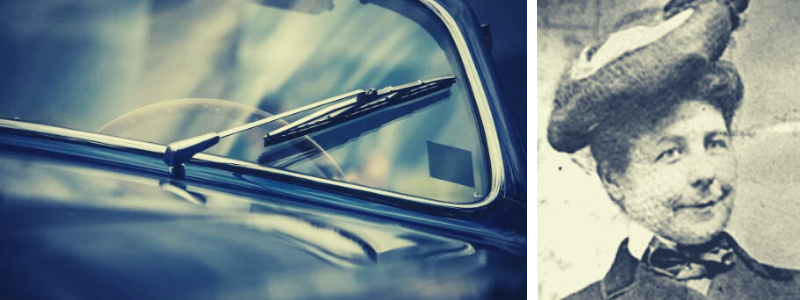
73. Mary A. Delaney (1936-2013)
Mary A. Delaney claimed that her invention of the leash that can shorten at just a moment’s notice was to help in preventing dogs from going to the wrong side of pedestrians or lamp posts, which only makes things annoying for the owner. If you are a proud pet parent, you should be thanking Delaney for designing the retractable dog leash.
74. Mary Beatrice Davidson Kenner (1912-2006)
Mary Beatrice Davidson Kenner had five patents under her belt—more than any other African American woman to date. Kenner came from a family of inventors, from her grandfather to her father and sisters. In 1982, she shared the patent for the groundbreaking toilet tissue holder with Mildred Davidson, her sister. The sisters’ design threads the roll’s free end through the mechanism that holds it apart from the rest of the roll, making it easier to grasp the tissue with just one hand. Kenner’s other significant patented inventions include a mounted back massager and washer and a wheelchair tray attachment.
75. Mary Lou Jepsen (1965-present)
Mary Lou Jepsen is very much aware of how the screen serves as the gateway to all the transformative powers a computer holds. She was the co-founder of MicroDisplay in 1995, serving as its chief technology officer, and worked on developing small screens. Later on, she ran Intel’s display division until her bold dream of a computer for each child spirited her away.
She co-founded the nonprofit organization One Laptop Per Child to give kids all over the world green and affordable notebook computers. She also applied her expertise in hardware to the production of XO, which is one of the lowest-cost and lowest-power notebooks ever developed. Kofi Annan unveiled the prototype device at the UN, with Jepsen winning the support and backing of major manufacturers that allowed OPLC to begin their devices’ high-volume production.
76. Mary Sherman Morgan (1921-2004)
When Mary Sherman Morgan decided to study science, she never imagined that her work would help make history in the heated space race. This American chemist chose to leave university to take on a secret position during World War II in a munitions factory. They improved ordinance and explosives to be used at the front. After the war, she sent her application to work for the Rocketdyne Division of North American Aviation, working on rocket propellants. Morgan was one of only a few without a college degree out of the 900 engineers, and she also happened to be the only woman.
When the Jupiter missile project contracted NAA to design an improved rocket fuel, Morgan became the technical lead. She developed Hydyne, which propelled the Jupiter rocket when it placed Explorer 1, the first satellite of America, into orbit. Since most of Morgan’s career was classified, not many people were aware of her contributions until George Morgan, her son, wrote a book and a play about her life.
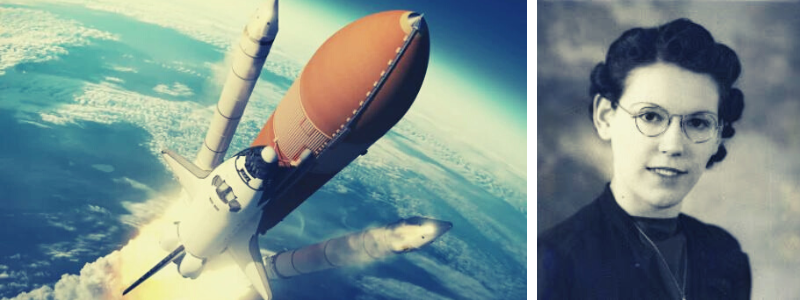
77. Mary Walton (18000-19000s)
With her passion for improving air pollution and urban conditions, Mary Walton developed the train chimney station in 1879 that helped lessen pollution in the air by using water to filter smoke, trapping and holding the airborne chemicals in suspension. Aside from this locomotive chimney that minimized air pollution, Walton also got a patent in 1881 for a method of reducing the noise of the elevated railways of New York City by using boxes of sand to insulate the tracks. The city’s Metropolitan Railroad purchased the rights almost straight away.
RELATED: 21 of the most influential designers of all time
78. Melitta Bentz (1873-1950)
If you are a certified coffee lover, you might want to thank Melitta Bentz, a German entrepreneur who made brewing easier. A housewife, Bentz had a hard time making coffee. Most of the time, percolators over-brewed it, cleaning the linen bag filters was too complicated, and her era’s espresso-style machines produced leftover coffee grounds in the drink. After experimenting with different materials, Bentz came up with the idea of using some blotting paper from her son’s school exercise book, placed inside a brass pot punctured with a nail.
The design was patented, and she established a business to produce her filters. In just a year, Bentz sold hundreds of the filters, and when 1928 came, her company already had dozens of employees. She continued to work on her filter through the years, making it even more popular. Today, the Melitta Group continues to make coffee, filters, and coffee makers.
79. Nancy Johnson (17000-18000s)
Nancy Johnson from Philadelphia rose to become one of the most influential people in history when she received a patent in 1843 for her design of a manually operated ice cream maker. The most exciting thing about it is that the design is still used today. Can you imagine how hot days would have been if Johnson didn’t come up with this brilliant idea?
80. Olga D Gonzalez-Sanabria (19000s – present)
Olga D Gonzalez-Sanabria originally came from Puerto Rico. She was the woman behind the technology development that helped create space station batteries during the 1980s. She currently works as the director of energy at NASA’s Glenn Research Center. While this invention might not be the catchiest you can find on this list, these nickel-hydrogen batteries and their long-life cycle help run the International Space Station, making this an important discovery.
81. Patricia Bath (1942-2019)
Since Patricia Bath became a part of the ophthalmology field, she continuously broke new ground. Bath was the first-ever black person to work as a New York University’s ophthalmology resident and the first-ever woman to become a part of Jules Stein Eye Institute’s staff. But Bath’s most significant achievement is the fact that she was also the first African American female doctor to earn a patent for medical purposes. This patent was for the medical device Laserphaco Probe, which Bath developed in 1981. Laserphaco Probe painlessly and quickly uses a laser for dissolving eye cataracts. It then cleans and rinses the eyes to make it easier and faster to insert the replacement lens.
The Laserphaco Probe is currently used worldwide as a safe and quick way to avoid blindness as a result of cataracts. Bath is also behind the development of community ophthalmology, a new discipline dedicated to ensuring that the entire population gets access to vision and eye care. While people cannot pay for the operation, Bath firmly believes that it is important for ophthalmologists to do everything they can to look after their patients’ vision, the ultimate reward of which is the ability to restore sight.
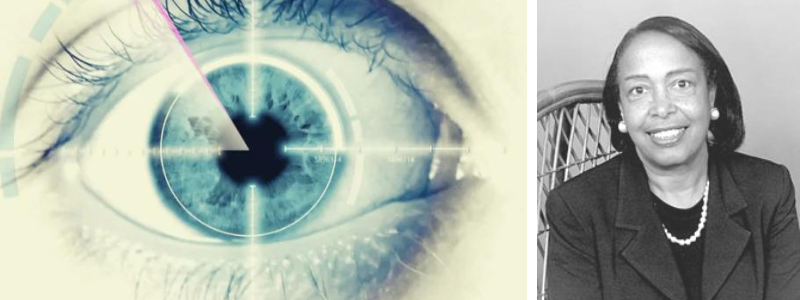
82. Patsy O’Connell Sherman (1930-2008)
During her attempt to develop a new type of rubber to be used for jet fuel lines, Patsy O’Connell Sherman and Sam Smith, her lab partner, discovered an insoluble, stain-proof, and waterproof polymer. This 1956 creation ultimately became Scotchgard.
83. Rachel Zimmerman (1972-present)
At the young age of twelve, Rachel Zimmerman developed software in 1984 that makes it possible for people with speech disabilities to carry out nonverbal communication using symbols on a touchpad. These symbols are then translated into written language.
RELATED: Top 100 gadgets that changed the world
84. Radia Perlman (1951-present)
Radia Perlman was employed as a consultant engineer for DEC or Digital Equipment Corporation when she came up with her most famous invention, the STP, or Spanning Tree Protocol. The STP is essential to how network bridges operate. An American network engineer and software designer, Perlman, also developed the TRILL protocol to address some of the shortcomings of the spanning trees.
85. Rita Levi-Montalcini (1909-2012)
Rita Levi-Montalcini, a female Italian neurophysiologist and scientist, was granted a research fellowship for a year in September 1946 in Professor Viktor Hamburger’s laboratory at the Washington University in St. Louis. The professor was impressed after Montalcini replicated the results of her own home laboratory experiments. Professor Hamburger offered Montalcini a research associate position, which she held for three decades. It was not until 1952 that she completed her most critical work. It was isolating NGF, or nerve growth factor, from observations of specific cancerous tissues that can lead to the very rapid formation of nerve cells.
86. Roberta Williams (1953-present)
Adventure gaming no longer has the same level of popularity today as the latest third-person and first-person shooter games such as Call of Duty. However, there used to be an era when all geeks only talked about adventure games and nothing else. Roberta Williams, probably most well known for King’s Quest, a series of adventure games that went up to its eighth sequel, was a visionary and pioneer in creating and popularizing this genre of PC games.
Together with Ken Williams, her husband, Williams co-founded the company Sierra On-Line, which was later called Sierra Entertainment. The couple helped shape the history of the world’s video games with their comprehensive storylines and complicated puzzles. Hints of Williams’ concepts and ideas can be seen in other gaming genres, such as fighting games that have a quest mode where the fighters need to battle their way through a series of achievements and bouts to seal their victory.
People’s obsession with games can also be associated with numerous non-gaming contexts. The games developed by Williams taught problem-solving and logic skills while making it seem like an adventure all the time. It is similar to how gaming changes things that seem mundane such as location check-ins, turning them into exciting quests for collecting digital badges.
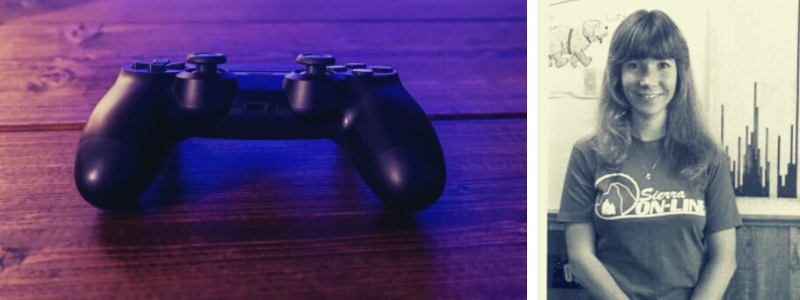
87. Rosalind Franklin (1920-1958)
Even though the discovery of the DNA double helix is usually associated with Crick and Watson, who won the 1962 Nobel Prize in Physiology, Rosalind Franklin was actually the one whose work established their theory on the structure of DNA. A British biophysicist, Franklin, was the first person in 1952 to capture a photographic image, with the nickname Photo 51. She used a technique she developed herself where molecules are observed using X-ray diffraction.
It is believed that Wilkins, Franklin’s estranged colleague, decided to show her photograph to competitors Crick and Watson without asking for her permission. It is why their name was forever attached to a discovery that they never made in the first place.
88. Ruth Graves Wakefield (1903-1977)
You might not believe it, but all the things you see, use, and eat every day were invented by someone out there, and yes, even your favorite chocolate chip cookies are not an exception! Ruth Graves Wakefield, an American entrepreneur, was not usual for her time. A university graduate, Wakefield started her career going on tours as a dietician to teach people more about nutrition and food. In 1930, Wakefield and her husband took over the Toll House Inn, which soon became popular for her food, specifically her desserts. But Wakefield wanted to give her guests something new and different. She used an ice pick on a chocolate block and added it to the cookie dough, marking the birth of the chocolate chip cookie.
When Wakefield published a new issue of her bestselling cookbook, she decided to include the “Toll House Chocolate Crunch Cookie” as a part of the dessert section. The cookie became so popular that Nestle, the chocolate company, noticed an increased demand for semi-sweet chocolate. They then approached Wakefield regarding the recipe’s rights. Nestle soon produced semi-sweet chips especially for cooking, with the Toll House recipe printed on all boxes. Wakefield received a sweet although minimally profitable payout of a dollar and a lifetime chocolate supply.
RELATED: Top 11 brilliant inventions discovered by accident
89. Ruth Handler (1916-2002)
Ruth Handler, a female American businessperson, was the woman behind the invention of the Barbie Doll in 1959. Later on, she invented Ken, Barbie’s boyfriend.
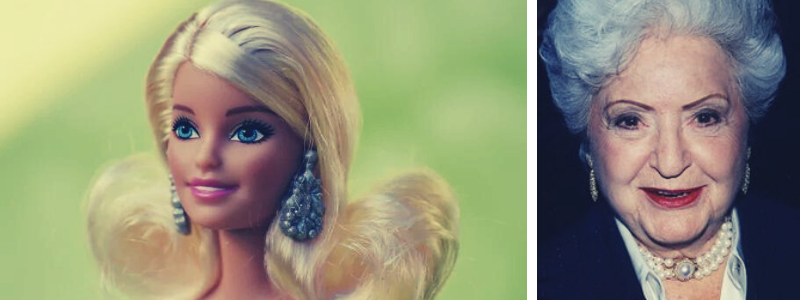
90. Ruzena Bajcsy (1933-present)
Ruzena Bajcsy is the director and founder of the General Robotics and Active Sensory Perception Laboratory at the University of Pennsylvania. Currently working as Berkeley’s Professor of Electrical Engineering and Computer Science, Bajcsy has led research in AI and machine operation. Her breakthrough advancements in computer vision and robotics earned her a position on the Information Technology Advisory Committee of the President from 2003 to 2005. With over 225 journal articles, 66 technical reports, and 25 book chapters under her name, Bajcsy earned the 2009 Benjamin Franklin Medal in Computer and Cognitive Science.
91. Sally Fox (1959-present)
Before the groundbreaking plant-breeding work of Sally Fox in 1997, cotton with natural color was temperamental, rare, and could only be manually picked and spun. This innovative work of Fox resulted in cotton that grew in a plethora of colors that could also be spun and harvested using a machine. It paved the way for a significant reduction in bleach and chemical processing and the requirement for synthetic dyes.
92. Sarah Boone (1832-1904)
While it was during the 1860s when patents for folding ironing boards started to show up, Sarah Boone’s ironing board featured a notable difference. It had a double-sided and narrow arm that made it an ideal choice for ironing sleeves to prevent the formation of creases.
93. Sarah Breedlove or Madam C. J. Walker (1867-1919)
Her parents’ first child, born following the Emancipation Proclamation, Sarah Breedlove, would become the United States’ first female self-made millionaire. Married and widowed at the young age of 20 years old, Breedlove was employed as a laundress when she realized that she and a lot of other Black women had a hard time dealing with scalp diseases and hair loss. It was because of the harsh ingredients in most hair products and the lack of indoor plumbing.
Through the years, she created her very own line of products for haircare especially made for the hair of African American women. She branded them under Madam C. J. Walker, her new identity. She deliberately chose the title to conjure Parisian luxury. Once her line of products was ready to be launched in the market, she also established a college for training hair culturists. It created a new opportunity for employment for thousands of women of African American descent. With the growth of her influence and wealth, Madam Walker used it to deal with political and social concerns. She made substantial donations to retirement homes, orphanages, and schools for African Americans. However, perseverance is her true and most important legacy of them all.
94. Sarah E. Goode (1855-1905)
Sarah E. Goode is a furniture store owner and inventor from Chicago who earned a patent in 1885 for her cabinet bed. This new furniture piece was a form of desk that could fold out to form a bed, giving users a chance to save space in a small apartment. This invention of Goode predated the pull-out sofas and pull-down Murphy beds of the twentieth century. Goode was born into slavery and only became free following the Civil War—thanks to her cabinet bed, she became one of the first black women to have an invention patented with the United States Patent and Trademark Office.
95. Sarah Mather (1796-1868)
The 1845 patent of Sarah Mather was for the submarine telescope she developed. It was an apparatus that featured a lamp affixed to a tub sunk underwater. This device was not used by underwater vessels; instead, it came in handy for people above water trying to view the depths to investigate damaged ship hulls, wrecks, and the activity of enemies during the Civil War.
96. Dr. Shirley Jackson (1946-present)
Dr. Shirley Jackson, a theoretical physicist, was the first-ever Black woman to earn a Ph. D. in 1973 from the Massachusetts Institute of Technology. While employed at Bell Laboratories, Jackson conducted innovative scientific research on subatomic particles. This research allowed others to design and develop the touch-tone telephone, portable fax, fiber optic cables, solar cells, and the technology behind call waiting and caller ID. Imagine all those vital details you would have missed if Jackson hadn’t made such a fantastic discovery.
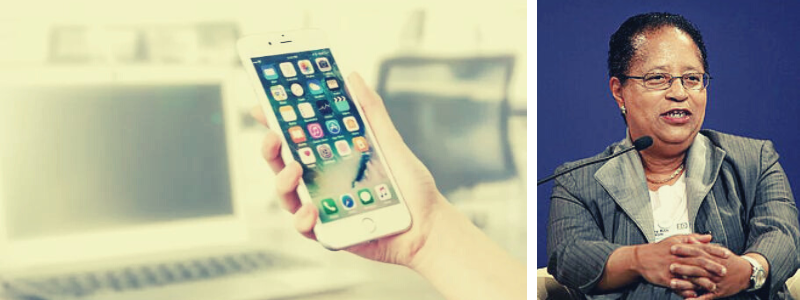
97. Stephanie Kwolek (1923-2014)
While it was actually a happy accident that helped the American chemist Stephanie Kwolek invent Kevlar in 1965, its discovery has been able to prevent harmful accidents up to this day. This material, up to five times stronger than steel, is used in racing sails, bicycle tires, armored cars, body armor, musical instruments, frying pans, and even building construction. Today, Kevlar has more than two hundred applications thanks to its incredible tensile strength to weight ratio.
98. Susan Kare (1954-present)
With some people describing her as the Betsy Ross of the personal computer, Susan Kare was the designer. She made it possible to bring to life the Apple computer with her sophisticated skills in iconic graphic design and typography. Working side by side with none other than Steve Jobs himself, Kare shaped most of Mac’s now-common interface elements, such as the command icon that she discovered while checking a book of symbols.
Kare is also the creator of the Happy Mac icon that greets Apple users every time they boot their machines and the trash can icon that informs users about where to put unwanted files. If Jobs took the credit for making the technology much more personable with the help of Apple’s devices, this is partly the result of the efforts of Kare to make computers feel less like a machine and more like a friend. However, she didn’t only work on Apple products. After Jobs was forced out during the mid-1980s, Kare also left Apple to work with Microsoft. She put her design skills to work there as she humanized the Windows 3.0 operating system.
Kare’s design work didn’t stop with Microsoft and Apple. You can also see her hand in most of the digital gifts on Facebook, such as friendly rubber ducky. You can also see her latest digital footprint in Glam Media, the online media powerhouse of which she is the co-founder and creative director.
99. Tabitha Babbitt (1779-1853)
While Tabitha Babbitt was employed as a weaver and residing in a Shaker community, she witnessed how people had difficulty using a pit saw to cut wood since two users are required. Cutting could also only be done in a single direction. With her determination to help, Babbitt grabbed her spinning wheel and attached a circular blade to it, marking the birth of the more efficient circular saw in 1812.
100. Temple Grandin (1947-present)
The innovative designs of Temple Grandin in the animal husbandry field have led to fewer injuries and calmer livestock. She has come up with different methods of handling cattle according to their natural behavior instead of using brute force. The center track cattle restraint system that Grandin developed in 1990 is now being used to manage approximately half of all cattle in the US.
These 100 famous females have definitely proven to the rest of the world that women are indeed empowered in many ways!
Cad Crowd has thousands of product design freelancers
If you’re looking for help designing your very own product, Cad Crowd can help. Our vetted product design freelancers can take care of anything ranging from product and concept design services and 3D modeling services to patent services. Learn how it works or contact us for a free quote.

Discovery and invention are not the same things.
Alice Ball discovered a chemical, then invented a way to help people.
Finding a comet is good and should be honored, it is not an invention.
Temple Grandin is an inventor and an amazing woman in her own right.
Temple Grandin made many men and women small compared to what she overcame for children and animals.